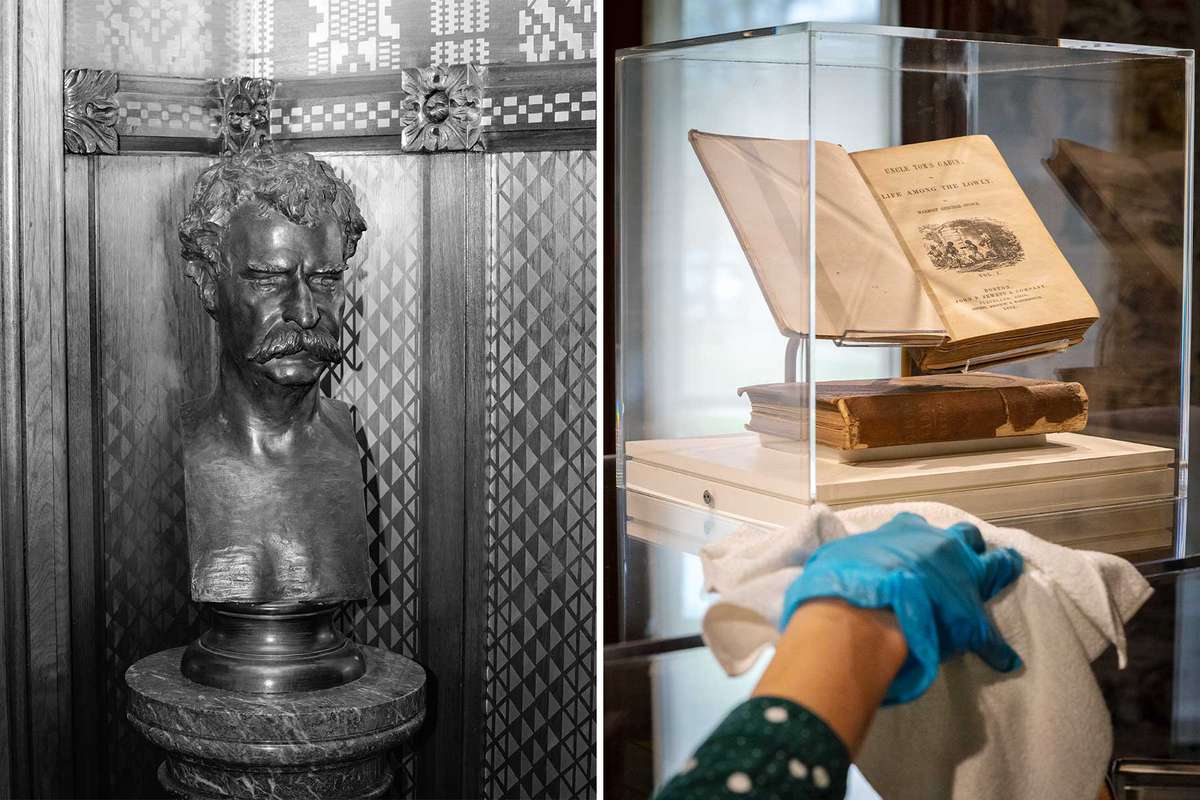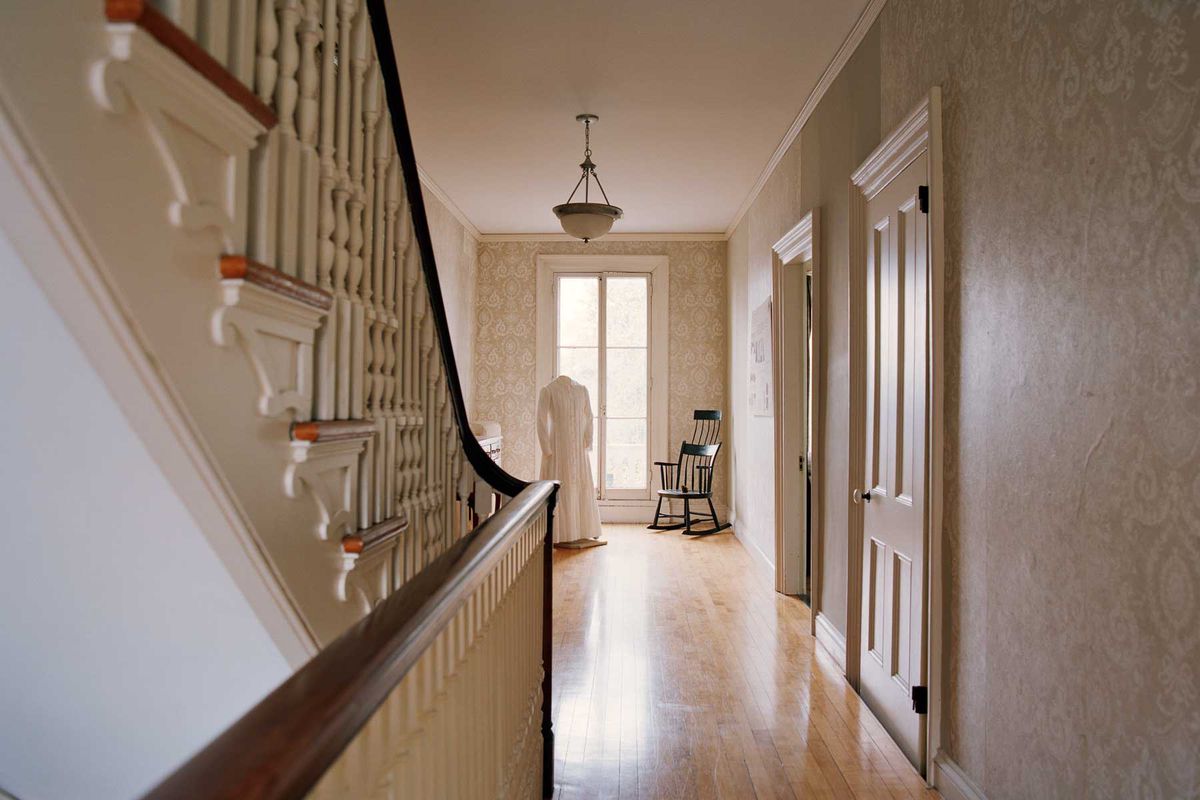What My Family Learned on a Literary Road Trip Through New England by Dinaw Mengestu
Shortly after I met my wife, she told me she hoped to one day visit Emily Dickinson’s house in New England. She was working at a publishing house in Paris’s 14th Arrondissement, across the street from Montparnasse Cemetery, where some of France’s most important writers—Baudelaire, Duras, Sartre, and Beauvoir, among others—are buried. As my wife explained to me, it’s a common article of faith in France that you can know a country through its authors.
By the time we began to plan our trip to Dickinson’s home, we had been married for 11 years and had two sons, ages 9 and 10. After five years in Paris and six in New York City, we had recently moved to the Hudson Valley, and had expanded our range of writers to form a loop that swept east to Hartford, Connecticut; northeast to Concord, Massachusetts; and, ultimately, back west, to the towns in the Berkshire Mountains. It was the only family trip we would take that summer; the pandemic had rendered most of the country off-limits, and our afternoons and evenings had become devoted to reading about and watching the protests against racism and police brutality flaring up across the country.
“But the writers are all dead,” my son observed.
“Yes, but we still read their books.”
“So… Are the houses haunted?”
It was too good an opportunity to pass up. “Yes,” we told him. “The houses are definitely haunted.”
On the morning we left to visit The Mark Twain House and Museum and Harriet Beecher Stowe’s home in Hartford, Connecticut, we watched an episode of The Adventures of Tom Sawyer, a Japanese anime series from 1980 dubbed into French and English that my wife and I both remembered from our childhoods. We’d been watching the show only a few minutes before we realized that the complicated issues of race raised by Twain’s work had become not only simplified, but also more racist in the animated version. We turned off the computer. When our youngest son asked why, I said something about history being complicated and messy.
Some of the conflict in how we approach the past was on display at the Stowe and Twain homes. For years, two of America’s most famous writers lived within shouting distance of each other in what was then a bucolic, wealthy enclave. Compared to Twain’s sprawling mansion, which sits on one side of an open lawn, Stowe’s cottage-style home, on the other side, comes off as almost self-consciously discreet.
As soon as we entered, my sons were surprised to find familiar faces hanging on the wall—President Obama, James Baldwin, Frederick Douglass, Laura Bush—along with quotes from each that praised or criticized the legacy of Uncle Tom’s Cabin, Stowe’s most famous novel. It’s a uniquely nondogmatic approach designed to invite debate and discussion—something Briann Greenfield, the executive director of the Stowe Center, told us was essential to the work of the foundation, which is determined to use Stowe’s work to engage with the moment we live in.
Even from the outside, Stowe’s house felt familiar. Walking through the parlor and dining room, which are largely decorated with furniture that belonged to the writer, my oldest son insisted we had been there before. I wanted to whisper to my wife that we had seen these rooms, with their lace curtains and decorative wallpaper, in a Whistler painting or while rummaging through a small-town antiques store. That familiarity made it easy to assume we knew the lives that had been lived inside of them—the bowed heads at the dinner table, followed by piano in the parlor.
While some version of that might be accurate, it’s equally true that the stolid ordinariness of the Stowes’ lifestyle belied their radical politics. Harriet was the seventh of 13 children in a family of prominent ministers who did more than just preach fire and brimstone. Her father, Lyman Beecher, and brother Henry Ward Beecher were prominent abolitionists. Stowe would outdo them all with the publication of Uncle Tom’s Cabin in 1852.
On the upper floor is the bedroom where Stowe worked, along with a gallery of the numerous translations and adaptations of Uncle Tom’s Cabin that appeared around the world, most without her permission. Horrified but not surprised by the ways the novel had been adapted to reflect as many racist tropes as possible, I was reminded that Stowe’s legacy was far from settled.
In the modern glass-and-brick Twain museum adjacent to his house, it became obvious that Twain, unlike Stowe, had become a brand. Etched into the walls were some of the pithy one-liners he was famous for, which my children read out loud. “Always obey your parents, when they are present” was a particular favorite.
Twain famously lost most of his money, and as we followed our guide out of the museum and into the house, we got a clearer sense of just how much effort that must have taken. Twain’s 25-room mansion is a marvel of American Gothic—an almost comically elaborate marriage of styles that seems intended to overwhelm visitors with its scale and detail.
Twain was a frequent but often reluctant host, and as we entered the house, our guide noted that if we were visiting in 1881, “George would have had us wait downstairs.” At some point, according to our guide, George would have returned to tell us, “I’m sorry, but Mr. Clemens has just stepped out.” Our youngest son asked me, “Who is George, and why does he say ‘Mr. Clemens’?”
I did my best to explain that Samuel Langhorne Clemens was Mark Twain’s real name and that George Griffin, a formerly enslaved Black man, had been the butler of the house, and perhaps the inspiration for the character of Jim, the escaped slave in Adventures of Huckleberry Finn.
“Is that why he keeps mentioning him?” my son asked. “Or are you going to say it’s more complicated than that.”
“Yes. And it’s more complicated than that.”
Unsurprisingly, Twain’s house has been immaculately preserved with original objects from the Clemens family. There is the painting named for Emmeline Grangerford, a character from Huckleberry Finn, hanging above the fireplace, and the Clemenses’ carved wood “angel bed,” made famous when Twain conducted a newspaper interview in it. There is also the recently restored bedroom where Griffin occasionally slept when it was too late for him to return to his own home in Hartford. That room, like Griffin’s elusive presence throughout the tour, is the last and perhaps most poignant reminder that Twain endures in no small part because his novels, like Stowe’s Uncle Tom’s Cabin, continue to elicit as much admiration as rage for their depictions of Black lives.
When we reached Griffin’s room at the end of the tour, our guide pointed out that there are no pictures of him, and that everything we know about him came from Twain or his family. Out on the lawn, my youngest son asked, even though I suspected he knew the answer, how that was possible in a house where so much had been preserved.


